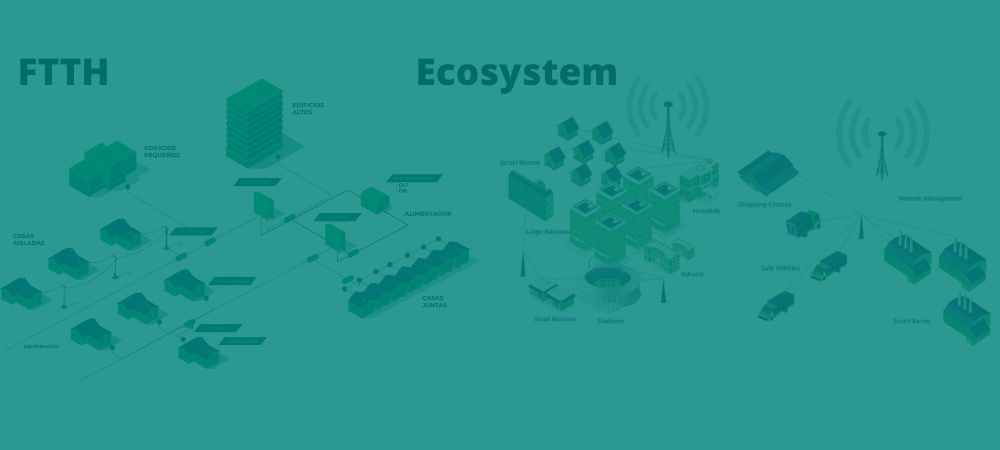 Technology has radically transformed how and where people work. Whether it’s eliminating basic frustrations like having to log into a system multiple times or enabling employees to feel more engaged thanks to virtual reality (VR), technology can empower your staff in new and exciting ways.
Technology has radically transformed how and where people work. Whether it’s eliminating basic frustrations like having to log into a system multiple times or enabling employees to feel more engaged thanks to virtual reality (VR), technology can empower your staff in new and exciting ways.
In this article we show you five examples of how technology can inspire your workforce remote during this time:
1. Experience the freedom to work from anywhere.
Before coronavirus (COVID-19), a Gallup poll found that 43 percent of Americans occasionally worked from home, and a new Harvard Business School study showed that companies that allow employees to work from anywhere attract workers who prove to be more loyal and productive.
Working from home, long important to digitally savvy employees, is even more essential now as companies continue to arm their teams with what they need to work remotely during quarantines.
2. Increase productivity by reducing interruptions.
Emails, texts, social media mentions, messaging app pings. Notifications like these bombard employees the moment they walk in. To minimize disruptions, employees are using applications such as Freedom y FocusMe to block websites for a period of time so they can stay focused and productive on the work tasks at hand. On the back end, companies are using integrated technology solutions to make employees’ daily lives easier.
Unified Workspace is one such solution that integrates software, services and hardware to minimize daily IT hassles and distractions such as password resets and lost VPN connections. It encourages employees to be more self-sufficient by allowing them to install applications without IT support and log into a single portal where they can access everything they need to do their jobs, no matter where they are.
3. Spearhead collaboration, execute big ideas.
Gone are the days of emailing a document to six different people. Now everyone can collaborate in a unique online version. Regardless of location, workers can come together on video solutions like Intel Unite, which allows teams to connect their displays wirelessly so they can share and collaborate seamlessly, and automatically save their work to the cloud.
As COVID-19 continues to force us to work from home, employees are responding with messaging tools like Slack to help them communicate and collaborate more easily, and conferencing tools like Zoom and Redbooth, to work together via HD video.
4. Provide better customer service, even remotely.
When the pandemic hit, many companies found it necessary to adjust quickly, including organizations such as Draper, a not-for-profit engineering firm that serves government, commercial enterprises and academic institutions, among others. The company’s projects are so important that Draper is even working with Blue Origin for sending americans to the moon for the first time since 1972.
Client Services Manager Sarah Villard says that during the pandemic, Draper provided loaner Dell laptops to a percentage of the workforce that typically used desktop computers while in the office. The laptops were immediately sent to Draper personnel so that everyone could continue working with a minimum of delay.
5. Discover e-Learning opportunities
Digital content is transforming the way employees learn new skills and get inspired, and has proven even more valuable in recent weeks. E-learning courses and educational content delivered over the Internet are expected to grow into a $325 billion industry by 2025, according to global industry analysts. It is particularly useful for remote workers
Several comprehensive systems and education services can make it easier for companies to inspire workers by providing high-quality hardware, timely course content, a user-friendly learning management system and ongoing technical support.
In addition, virtual reality is transforming learning and development by immersing employees in training processes. For example, Adobe’s Captivate uses VR to engage learners and mimic real-life situations such as safety drills, while Indianapolis-based Republic Airways uses VR to replicate flight experiences as a way to introduce aspiring pilots to the aviation industry.
In addition, in the medical and healthcare industries, VR can be used with doctors and nurses to help them practice important procedures. Having medical employees wear glasses to see what a polyp looks like, for example, can bring concepts to life and facilitate deep learning.
By leveraging technology to foster training, collaboration, productivity and workforce mobility, companies can inspire their staff to excel from any corner of the world or room in the house.
Retrieved from: https://blog.dellemc.com/




